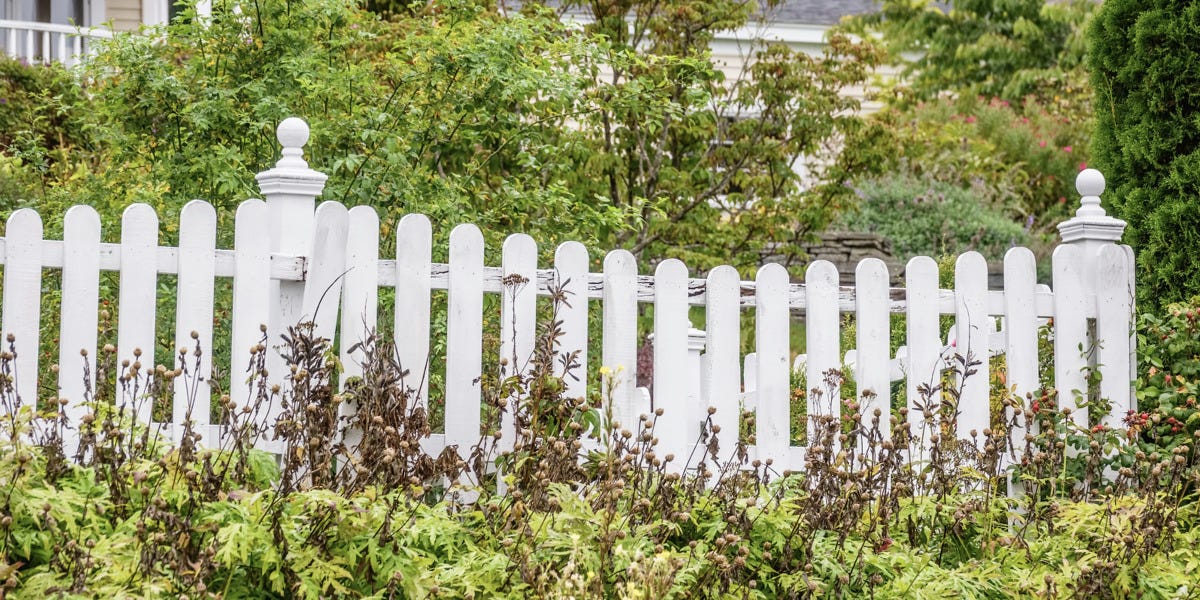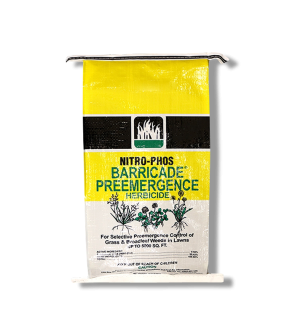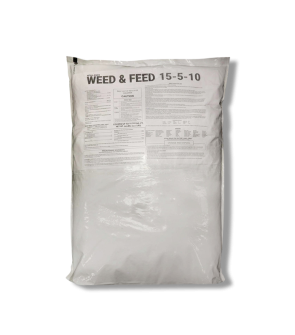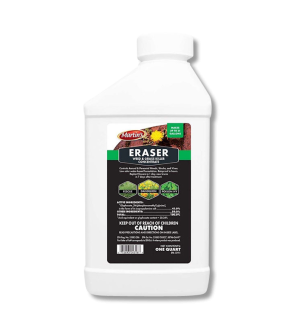Weeds in Fenceline
Most Effective Products
Common Weeds in Fence Lines
While it may start off small, seeing invasive foliage peek through fences or grow up the boards are causes for concern. But, before you know it you are dealing with a full-blown weed infestation on and around your fence line.
There’s no telling how many different weed species grow in these sites, but the most common ones to see are crabgrass, dandelion, field bindweed, or poison ivy. Besides the stealing of nutrients, these weeds can make it unsightly and hard to maintain fence lines.
If left untreated, then these weeds can weaken the fence over time by pushing against the bottom causing it to lean forward. Therefore, learning more about these weeds in this article and preventing them before they appear can go a long way in maintaining fences.
If you are not seeing a weed listed here then contact our customer service team by phone, email, or in-person at one of our store locations for professional recommendations.
Identification

From left to right in the image above: Crabgrass, dandelion, field bindweed, and poison ivy.
Crabgrass is a grassy weed that has stems and blades that grow in clusters with the stems going outwards.
Dandelion is a broadleaf weed that appears as a yellow flower throughout the year until it changes into a white puff ball of seeds. When they appear they will have grow in a rosette arrangement with a jagged leaf shape.
Field bindweed are broadleaf weeds that have a funnel-shaped, white to pink color flower measuring 1-2 inches long. They will grow in an extensive network of above-ground vines.
Poison ivy are broadleaf weeds that grow as a low shrub or vine on surfaces up to 1-4 feet tall. Each leaf will have 3 leaflets. In its early stage of growth, they will have green or yellowish white flowers.
Inspection

*Poison ivy shown as example growing along fence line.
Depending on the weed, they will grow at the base of fence lines, in-between boards or voids on fences, corners, top part of fence, and along the sides.
Treatment
Step 1: Install Barrier

One way to prevent unwanted broadleaf and grassy weeds from growing under or near your fence is to install a physical barrier.
A permeable fabric-like plastic, plastic edging, or post saver along the bottom of the fence will create a physical barrier the weed won’t be able to grow through.
Any fencing with visible holes like brick, concrete, masonry, stucco, or wood should be filled with the appropriate sealant. Parts of the fence with extensive damages should be replaced or repaired.
Step 2: Apply Pre-Emergent Herbicide
 Some weeds spread their seeds and root systems underground instead of creeping on the above-ground surface.
Some weeds spread their seeds and root systems underground instead of creeping on the above-ground surface.
These kinds of weeds are hard-to-control and can return repeatedly throughout the season making it harder to maintain fences.
Apply a pre-emergent herbicide to prevent weeds from returning and effectively stopping them from growing under or along fences.
For a general pre-emergent weed control option, check out Barricade Pre-Emergent Herbicide.
Barricade Pre-Emergent Herbicide is a granular pre-emergent that prevents a broad-spectrum of broadleaf and grassy weeds like dandelions from growing on lawns.
Determine how much Barricade Pre-Emergent Herbicide to use by measuring the square footage of the treatment area. To do this, measure the length and width of the treatment area in feet then multiply them together (length X width = square footage).
Depending on your turf species, you may be using anywhere from 1.5 to 4 pounds of Barricade Granular Pre-Emergence Herbicide per 1,000 sq. ft.
Broadcast the product granules with a push or broadcast spreader. Begin by spreading in 2 perpendicular passes for full coverage of lawn and near fence line.
After applications, water the granules in with 0.5 inches of irrigation.
Step 3: Apply Post-Emergent Herbicide
 The best way to keep your fences weed-free is to apply a post-emergent herbicide to kill any emerged weeds you see.
The best way to keep your fences weed-free is to apply a post-emergent herbicide to kill any emerged weeds you see.
With any weeds, you will need to look at the product label for the weed it will control. Not one herbicide will truly kill them all, but by using a combination of products you can control them.
To kill poison ivy, dandelion, field bindweed, and crabgrass appearing on your fences, use Eraser 41% Glyphosate. We recommend using a handheld pump sprayer to avoid spray drift.
Apply 2 ½ oz (5 tbs) of Eraser 41% Glyphosate in 1 gallon of water to treat 300 sq. ft. of fence lines with poison ivy.
Spray this product along fence lines and on poison ivy growing on fences. This product will kill all plants, including lawns so be careful when spraying.
Use a cardboard or plastic shield to protect desirable plants from spray or drift.
Step 4: Maintain Fence Line

In the long run, regular maintenance around your fences and lawn can support a weed-free fence.
Keep your turf healthy and in-shape by mowing when it reaches 3 inches in height and using a weed trimmer in corners of fences that cannot easily be mowed.
Water turf and desired ornamentals near fences with 1 inch of irrigation once per week. Best to do so early in the morning so turf has enough time to dry.
Fertilize your lawn to keep it strong and healthy to fight against unwanted foliage better.
Solutions 15-5-10 Weed & Feed Fertilizer with Trimec is a slow-release granular fertilizer that supplies essential nutrients for growth turf. This product will also work to kill germinating weeds in the soil within 30 days of application.
Apply 3.2 to 4.0 lbs. of Solutions 15-5-10 Weed & Feed Fertilizer with Trimec per 1,000 sq. ft. of turf.
With a push or broadcast spreader, evenly apply the granules across your entire lawn then 1-2 days after application water them in.
Key Takeaways
What Kills Weeds on Fences
- The best thing to use to kill weeds on and near fences is a non-selective herbicide like Eraser 41% Glyphosate. Using a non-selective herbicide ensures a broader range of weeds will be controlled.
How to Keep Weeds From Growing Under Fences
- Filling in the space underneath fences with gravel or other physical barriers would stop weeds from growing underneath them. Also, spraying non-selective herbicides at the base of fences will help too.
Should I Mow Weeds Along Fences
- We recommend pulling the weeds by hand or avoiding fence line areas altogether when mowing until weeds are dead. Mowing weeds can help to spread the infestation further into your yard.














































































































































































































































































































































































































































































































































